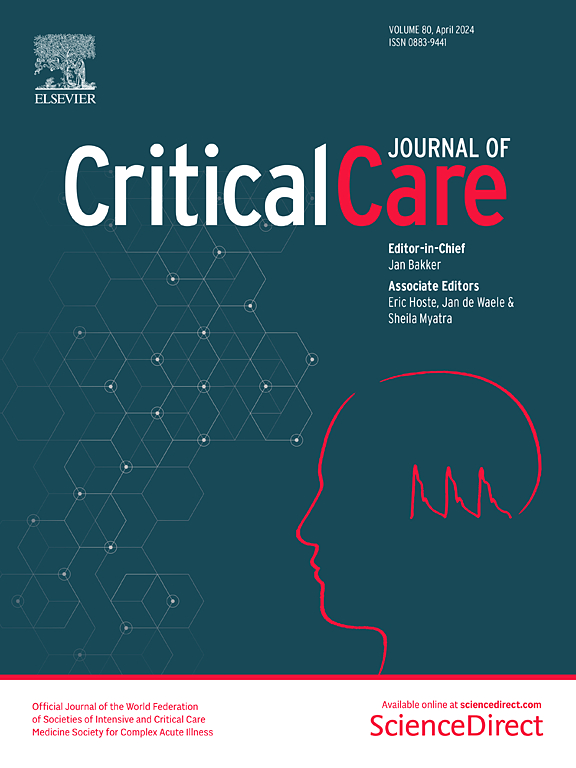Individualized PEEP can improve both pulmonary hemodynamics and lung function in acute lung injury
IF 8.8
1区 医学
Q1 CRITICAL CARE MEDICINE
引用次数: 0
Abstract
There are several approaches to select the optimal positive end-expiratory pressure (PEEP), resulting in different PEEP levels. The impact of different PEEP settings may extend beyond respiratory mechanics, affecting pulmonary hemodynamics. To compare PEEP levels obtained with three titration strategies—(i) highest respiratory system compliance (CRS), (ii) electrical impedance tomography (EIT) crossing point; (iii) positive end-expiratory transpulmonary pressure (PL)—in terms of regional respiratory mechanics and pulmonary hemodynamics. Experimental studies in two porcine models of acute lung injury: (I) bilateral injury induced in both lungs, generating a highly recruitable model (n = 37); (II) asymmetrical injury, generating a poorly recruitable model (n = 13). In all experiments, a decremental PEEP titration was performed monitoring PL, EIT (collapse, overdistention, and regional ventilation), respiratory mechanics, and pulmonary and systemic hemodynamics. PEEP titration methods resulted in different levels of median optimal PEEP in bilateral lung injury: 14(12–14) cmH2O for CRS, 11(10–12) cmH2O for EIT, and 8(8–10) cmH2O for PL, p < 0.001. Differences were less pronounced in asymmetrical lung injury. PEEP had a quadratic U-shape relationship with pulmonary artery pressure (R2 = 0.94, p < 0.001), right-ventricular systolic transmural pressure, and pulmonary vascular resistance. Minimum values of pulmonary vascular resistance were found around individualized PEEP, when ventilation distribution and pulmonary circulation were simultaneously optimized. In porcine models of acute lung injury with variable lung recruitability, both low and high levels of PEEP can impair pulmonary hemodynamics. Optimized ventilation and hemodynamics can be obtained simultaneously at PEEP levels individualized based on respiratory mechanics, especially by EIT and esophageal pressure.求助全文
约1分钟内获得全文
求助全文
来源期刊

Critical Care
医学-危重病医学
CiteScore
20.60
自引率
3.30%
发文量
348
审稿时长
1.5 months
期刊介绍:
Critical Care is an esteemed international medical journal that undergoes a rigorous peer-review process to maintain its high quality standards. Its primary objective is to enhance the healthcare services offered to critically ill patients. To achieve this, the journal focuses on gathering, exchanging, disseminating, and endorsing evidence-based information that is highly relevant to intensivists. By doing so, Critical Care seeks to provide a thorough and inclusive examination of the intensive care field.
 求助内容:
求助内容: 应助结果提醒方式:
应助结果提醒方式:


